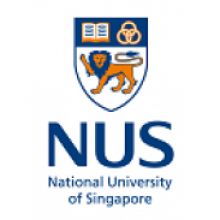In some parts of Asia, masked but cautious students and faculty are beginning to fill up classrooms, laboratories and dormitories once more. If the spread of Covid-19 continues to be contained, most universities in mainland China, Hong Kong, Macao and Singapore expect to be open for at least some in-person teaching in the 2020-21 academic year.
Taiwan, meanwhile, has kept its universities open throughout most of the pandemic, with only a few weeks of disruption in February. Huey-Jen Jenny Su, president of National Cheng Kung University (NCKU), told a THE Live Asia event that the institution had set up screening facilities and implemented student check-ups, distributed face masks and rolled out other social distancing measures. “It was a critical period for everyone to become literate” in disease control, she said.
Administrators are nevertheless bracing for a dreaded second wave of infection. Many Asian institutions will continue running online classes simultaneously, just in case campuses need to shutter again. Distance learning will also benefit overseas students, who number in the hundreds of thousands and are unlikely to return to campus soon because of strict travel bans. Even movement between neighbouring Asian states is restricted, and non-residents may be barred from entry.
Across the region, institutions are grappling with how to balance disease prevention and a return to some semblance of normal campus life.
A recent walk around the University of Hong Kong showed a campus that was quieter than usual, but still lively and open to visitors. Faculty were back in offices, residential colleges were partially full and the museum was presenting an exhibition of Chinese ink paintings. Still, there was a mask on every face, plus a digital thermometer and hand sanitiser in every hallway.
“We never had a lockdown; we had restrictions. We are looking ahead now,” Ian Holliday, HKU vice-president and pro vice-chancellor (teaching and learning), said in an online dialogue on the Fight Covid-19 website.
“The Hong Kong people have been exemplary in responding to the crisis. They have no hesitation in using face masks; they pay attention to and act on the science; and they always act responsibly,” he told Times Higher Education. “The fact that the wider social setting is not so challenging is clearly key. We’re taking very cautious and measured steps to bring students back to campus. We can only do even that because the situation in Hong Kong as a society is comparatively good.”
HKU will move to a “gradual and partial return to face-to-face teaching” for summer courses and the autumn semester, using hybrid teaching methods.
At the National University of Singapore (NUS), campus operations resumed on 2 June, the first day that the city-state began exiting its “circuit breaker”, the name of its partial coronavirus lockdown.
“At NUS, we see great value in giving our students a vibrant campus experience, and we’re doing everything we can to ensure that this is done in a safe and careful way,” Tan Eng Chye, the university’s president, told THE.
When students return for the new semester in August, they will have their temperatures checked and their locations tracked on an app via a national digital check-in system. They will move by bus between special zones designated for teaching, research and residences, according to the NUS’ emergency information website. Laboratory-based research staff have returned to campus on staggered shifts, while administrative staff work from home if possible.
In mainland China, the return to campuses began in April. By late May, more than 90 universities, colleges and vocational schools in Beijing alone were practising run-throughs of temperature-taking and disinfection protocols, according to Chinese media. At the Beijing University of Chemical Technology, for example, testing will be conducted on staff, while students will need to scan a code before entering premises. Some Beijing institutions, such as Tsinghua University, will allow students back from 6 June.
Xi’an Jiaotong-Liverpool University (XJTLU), in the eastern city of Suzhou, will deliver all its courses on-campus and online simultaneously for the autumn semester.
“This ‘near and far’ delivery system offers everyone the maximum flexibility,” Kirsty Mattinson, director of XJTLU Global, told THE. “If students are on campus at the start of the semester, then they can go straight to class. If their arrival is delayed, they can study online and, when they arrive back in Suzhou, they can switch seamlessly to a classroom experience.”
Infection rates in China, where the novel coronavirus was first reported in January, are now far lower than they are in the West. Daily new cases in mainland China and Hong Kong number in the single digits. Those figures are at nearly zero in Taiwan and Macao.
Singapore has significantly higher tallies, although most cases are in dormitories for migrant labourers that are sealed off from the general public. Daily new “community cases”, a government category that excludes the dormitories, number in the single or low double digits.
The situation is not as rosy across other parts of Asia, where universities are still largely closed, from Japan to India.
Even the most careful nations can backtrack. South Korea, which was praised as a model for widespread testing and strict quarantining, had to make a U-turn on a decision to reopen schools after new clusters of Covid-19 popped up in late May.
“Universities around the world are carefully assessing their options regarding the reopening of their campuses amid the Covid-19 pandemic,” said Professor Tan of NUS. “This is understandably a tough decision, as it impacts the health and safety of students, faculty members and staff – as well as their families and those in the surrounding communities. It is important that such decisions are made in consultation with public health experts, and with the precautionary measures and return-to-workplace policies of cities and countries.”
POSTSCRIPT:
Print headline: In Asia, new normal starts to emerge
Register to continue
Why register?
- Registration is free and only takes a moment
- Once registered, you can read 3 articles a month
- Sign up for our newsletter
Subscribe
Or subscribe for unlimited access to:
- Unlimited access to news, views, insights & reviews
- Digital editions
- Digital access to THE’s university and college rankings analysis
Already registered or a current subscriber? Login











